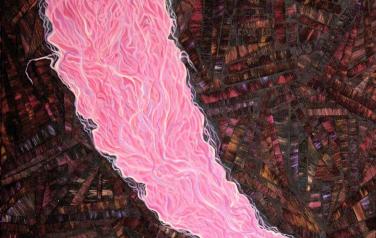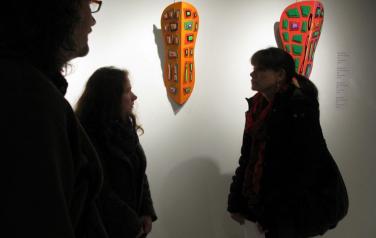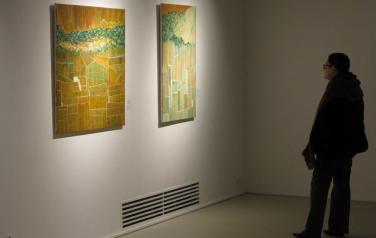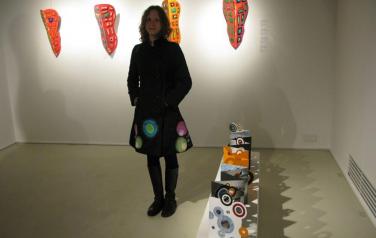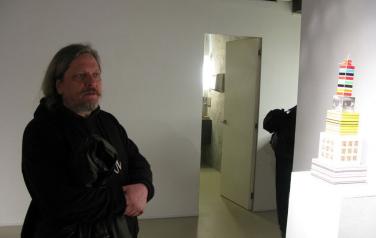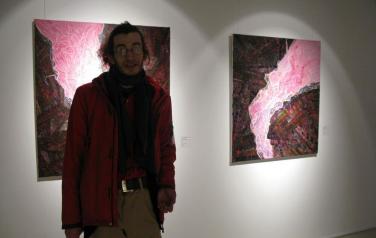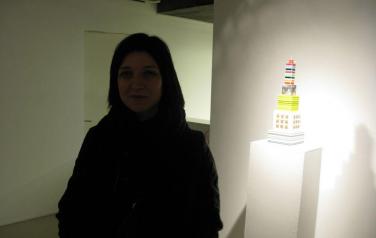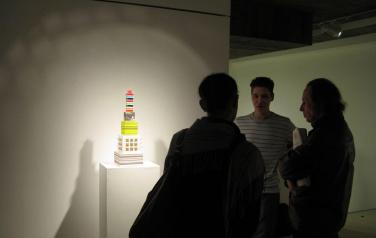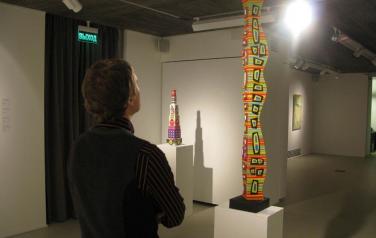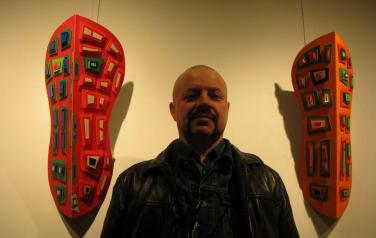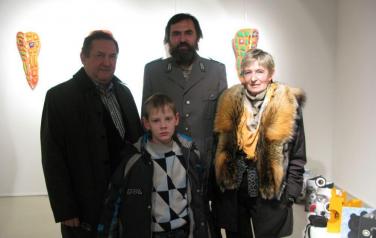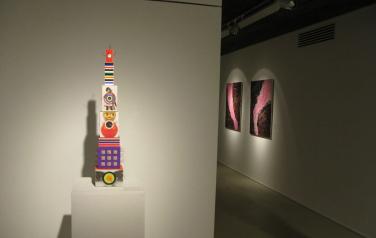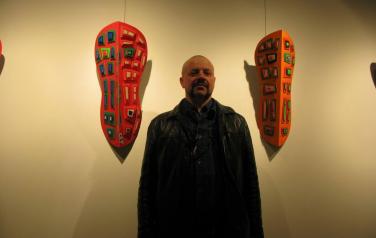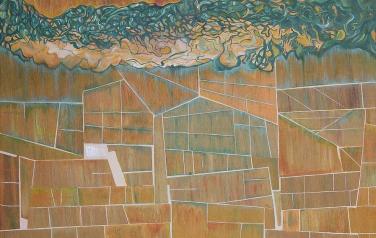Artists:
- Mikhail Molochnikov
- Tamara Ivanova
Mikhail Molochnikov and Tamara Ivanova have much in common. They share a studio in Berlin and get along well: they are people of one generation, who were just in time to receive a Soviet Union art education, a craft, in the good sense of the word, and the Soviet experience of artistic dissent, though not for too long. The crafts of Mikhail Molochnikov and Tamara Ivanov are architecture and book design, respectively. These have fed them, allowing them to remain formalists-dissidents in relation to both official art and alternative culture. An honest craft, open formalism and independence have led them both, though along different paths, to experiments with books, out of which, in one way or another, all the works presented at the exhibition “Made in Berlin” have come.
For Mikhail Molochnikov’s books the boundaries of the rectangular block of a book are clearly too narrow. His books strive to break free, creeping in space like the centipedes of beautiful pop-up books. And their pages also cannot be kept within the limits of the rectangular format: exquisite abstract collages made out of coloured cardboard, found photographs and texts, are riddled, as if by bullets, by the round holes of targets-mandalas which sometimes go off the edge of the page like timber fungi. The book, in the classical European tradition, is always compared to architecture with its clear prop and beam constructions of horizontals and verticals, demonstrating in its whole appearance a resemblance to the temple of truth, or to its tombstone. But these pop-up books, either shot straight through or swollen with cells ready to divide, are most similar to living organisms capable of endless reproduction. In this they remind one of the “cellular” structures of Filonov’s “made” paintings – Mikhail Molochnikov asserts that Filonov’s principle of “madeness” strongly impressed him in his youth. Anyway, no matter how many new pages grow in such a “living” book, its text does not change, because there is no text. Rather, there is text, but there is only one and it is given a priori by all the books, sculptures and objects of the artist, whether they be cheerful savage masks, idols, or ziggurats of cardboard bricks, made out of paper of caustic colours, using the appliqué technique. This text seems to be equal to Mikhail Molochnikov’s instantly recognisable style, who successfully crossbred Filonov’s “madeness” and the ritual artwork of the aborigines of Australia and Africa: he allures one into the cosmic space of myth, telling us about vitality which fills the world and giving witness to the perpetual cycle of natural forces.
Tamara Ivanova’s series of paintings “River” is also, in fact, related to books, to be exact, – to cartography. Decorative and abstract, at first glance, the canvases are maps: portraits of imaginary rivers, seen from Space through an imaginary GPS satellite, whose cold eye has captured the Earth, which is randomly covered with the patchwork of fields and cut up by turbulent rivers of water. Referring to such a rich symbol, as a river, the artist appeals to our mythological memory and fantasy, offering that we see in these “blood vessels of the Earth” something anthropomorphic – from veins filled with the sap of life, to a very naively depicted stream of consciousness. And once again the paintings of Australian aborigines come to mind. “The deeper man moves into high-tech, the more sensitive he is to the archaic”, – believes Tamara Ivanova.
It is not by chance that the authors of wordless books and maps are looking for support in cultures which do not have a writing system: it can be explained by the meaning and purpose of the history of the artistically dissected book. Only in the 20th century has the artist working on a book finally taken revenge on the writer for the fact that for centuries he has had to be content with the humble position of illustrator. The first step towards emancipation was the livre d’artiste: luxurious limited editions for sophisticated collectors-intellectuals, in which everything – from the box to the font – was relegated to Art, the reader was replaced by the viewer, freeing the book from the dictates of text, so that Joyce retreated into the background behind Matisse, and Aristophanes – behind Picasso. The final victory was won over literature by book art, the book-object, ridding itself sometimes not only of text but also of covers, spines, pages, even paper – in short, of everything that made a book a book. However, in the 21st century, the age of electronic readers, which proclaimed the end of the Gutenberg epoch, the artist working on a book, which though deprived of text can still rustle its pages and preserve the age-old charm of what is now increasingly referred to as “a hard copy”, looks like the true Don Quixote. It seems that the biological and mythological elements in the works of Mikhail Molochnikov and Tamara Ivanova say that the antediluvian paper book will fight to the last to resist the coldness of the screen media. Just as man will fight to the last to hold on to his archaic, symbolic consciousness.
Anna Tolstova
